Glossary of commercial painting words and phrases
It can be frustrating when a painting quote or contractor uses words and phrases that are unfamiliar to you. To help our clients better understand the language painters use, we have created this ever-growing glossary of commercial painting terms and phrases.
- Adhesion: The ability of paint to bond securely to a surface without peeling, cracking, or blistering.
- Aeration: Bubbles that form in paints during preparation and can affect the application.
- Atomize: When a paint gun turns paint into particles or mist.
- Back-rolling: After spraying paint, the process of using a roller to smooth out any uneven areas or achieve a consistent texture.
- Base: The first layer of a multi-part paint application.
- Blast Cleaning: Surface preparation of steel by use of compression-propelled abrasive materials.
- Bleeding: When the old paint or coating shows through the new coating.
- Blending: Also called feathering, the joining of two colors so the difference is indiscernible.
- Blistering: Bubbles under the surface of a paint coat.
- Caulking: Applying a flexible sealant or caulk to fill gaps, cracks, or joints between surfaces, creating a smooth and seamless appearance.
- Chipping: Removing paint and particles with a sharpened implement.
- Cissing: Seeping of paint into cranks and indentions that cause the surface to show through.
- Color Match: Selecting a color that is identical to another color.
- Crocodiling: Wide, crossing cracks formed in layers of paint.
- Curdling: Caused by the partial drying of the paint.
- Delamination: When adhesion fails and paint peels from its surface.
- Hardness: A measure of the resistance of a coating to damage.
- Cut-in: The process of painting along the edges or corners of a surface using a brush or roller, creating a clean line between different colors or surfaces.
- Drywall: Building material used to create interior walls and ceilings. Drywall must be properly prepared before painting.
- Drying time: The time it takes for paint to completely dry and cure. It can vary depending on the type of paint, temperature, humidity, and ventilation.
- Elastomeric paint: Elastomeric paint is a specialized type of coating that contains elastic polymers, such as acrylic or synthetic rubber, in its formulation. It is designed to provide exceptional flexibility and durability, allowing it to expand and contract with substrate movement without cracking or peeling. Elastomeric paints are commonly used on exterior surfaces, such as stucco, concrete, masonry, and wood, where there is a need for protection against weathering, cracking, and water intrusion.
- Feathering: Blending the edges of freshly applied paint with previously painted areas to create a seamless finish.
- Flashing: Uneven sheen or glossiness that occurs due to inconsistent absorption of paint on a surface, resulting in visible variations.
- Nap: The fibers on a paint roller.
- Overspray: Paint spray that does not hit the intended surface.
- Prep: Short for preparation, can include masking, taping, sanding, covering autos and plants, etc.
- Primer: A preparatory coating applied to a surface before painting to enhance adhesion and provide a smooth base for the paint.
- Priming/sealing: The process of applying a primer or sealer to bare wood, metal, or other porous surfaces to prevent the paint from being absorbed unevenly.
- Re-Coat Time: The time necessary before a second coat can be applied.
- Rolling: Applying paint to a surface using a roller brush or roller cover.
- Sanding: The process of using sandpaper or sanding tools to smooth rough surfaces, remove imperfections, or prepare a surface for painting.
- Sheen: The level of glossiness or shininess of the paint finish. Common sheen levels include flat, matte, eggshell, satin, semi-gloss, and high gloss.
- Spraying: The technique of applying paint using a paint sprayer or spray gun for large surface areas or achieving a smooth finish.
- Substrate: Any surface that will be painted.
- Taping: Using painter’s tape to mask off areas and create clean, straight lines between different paint colors or surfaces.
- Texture coating: A specialized paint product that adds texture to surfaces, creating decorative or functional effects.
- Topcoat: The final layer of paint applied to achieve the desired color, finish, and protection.
- Touch-up: Applying paint to small areas or imperfections to match the existing color and finish.
- Touch-Dry: When paint no longer feels tacky to the touch.
- Water Spotting: Spots created by a reaction of paint to water when drying
- Undercoat: A layer of paint applied after the primer to provide a uniform surface and enhance the adhesion of the final coat.
- VOC: Volatile Organic Compounds are chemicals that evaporate at room temperature and contribute to air pollution. VOCs are regulated in commercial paints, and low-VOC paints are environmentally friendly.
Please note, this is just a selection of terms and phrases commonly used in commercial painting. There will be additional industry-specific jargon or regional variations.
